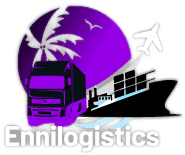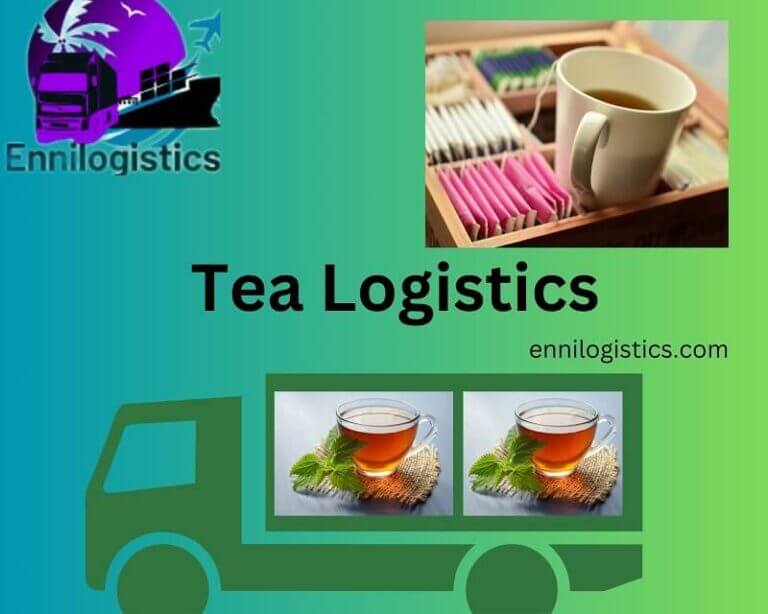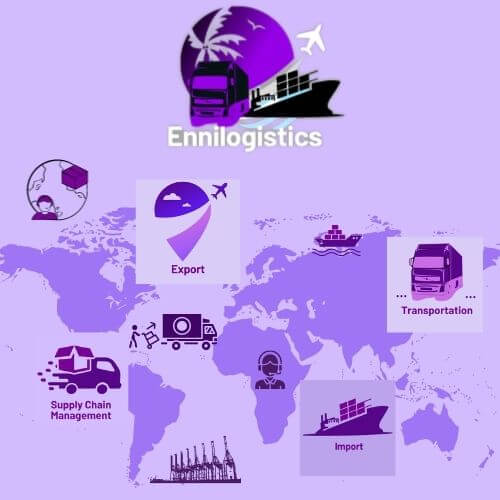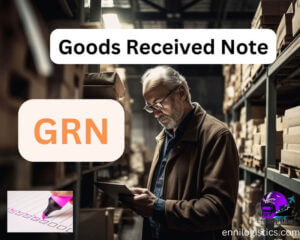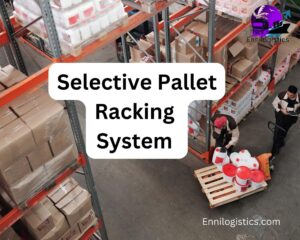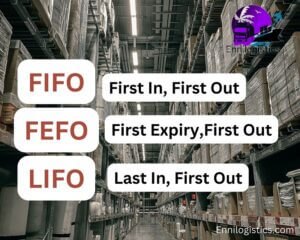Tea logistics is the management process of tea transportation and distribution process from the origin point of the tea plantation or estate to the ultimate tea consumer. Tea is a perishable plant, so it needs to have a better and speed process of transportation and logistics to keep the freshness and quality of the product for manufacturing tea powder.
In this blog, we are going to discover the tea trading industry through a logistician’s eye, which is called tea logistics. Before explaining the tea logistics process. It helps to have a better knowledge of the tea supply chain.
Tea Supply chain
Tea, one of the most consumed beverages worldwide, has a fascinating journey from tea gardens to teacups. The tea supply chain is a complex network of interconnected stages, encompassing tea cultivation, processing, packaging, transportation, distribution, retail, and consumption.

Tea supply chain steps by steps
- Raw material from Tea estates and plantation
- Tea leaves plucking and harvesting
- Leaf collection and transport to processing centers
- Tea processing
- packaging and warehousing
- Transport to local distribution centers
- Distribution to Retailers and whole sellers
- Export process
- Import logistics
- foreign outlets
- Consumption
Logistics Activities involvement of a Tea supply chain
- Raw material (tea leaves)transport to manufacturing factories
- Value addition activities in a tea production process
- Packaging
- Warehousing activities
- Local Distribution
- Export or import process
- Transporting and distribution activities for local sales
- Temperature and humidity control
- Quality checking
- Inventory management
- Customs clearance process and import-export documentation
- Import logistics
- Last-mile delivery
What are the value additions in the tea processing center?
Tea value addition is done in the tea processing centers as an additional step of processing in basic tea manufacturing. It creates a unique taste for characteristics of the basic product of tea. It may add flavors and a variety of packing methods for targeting different types of market segments. Such as local and import, low budget and high class, health and benefits, etc.
Making value-added tea products.
Green tea
black tea fruit flavored tea
cinnamon tea
Value adding by packaging methods
Tea bags
bulk tea
the small size of the tins
Tea envelops
Value adding by mixing flavors
Vanilla
cinnamon
Harbel tea
Tea packing methods
Tea packing is the most important factor in the tea logistics process. Tea packing is based on the type of tea, market segment, and preference of the market, There are more Tea packing methods available it can use various ways for tea products for sale and distribution. The selection of packing method depends on factors such as the type of tea, consumer preferences, market segment and trends, and sustainability considerations. Here we are going to identify some common tea-packing methods
Loose Leaf Tea
- Loose-leaf tea is sold without individual packaging.
- Allows for better aroma and flavor retention.
- It is commonly used for premium and specialty teas.
Tea bags
Tea leaves are covered in permeable paper or fabric bags is a very easy and very famous method of tea packaging
Pyramid Bags
Tins and Canisters
Sachets
Single-Serve Pods
Foil Bags
Eco-Friendly Paper and Cardboard
Biodegradable and Compostable Materials
Packing materials suitable for tea exporting
Tea exporting is a critical aspect of the global tea industry, and the packaging materials used play a pivotal role in preserving the tea’s quality, flavor, and aroma throughout its journey from the tea gardens to international markets.
- Paper
- Biodegradable Materials-materials made from plant-based resources, such as cornstarch
- Plastic
- Foil pouches or bags
- Tin and Metal
- Glass
- Non-Woven Fabrics-pyramid tea bags or sachets
What are the factors affecting for good packaging of tea
The packaging of tea plays a critical role in ensuring that the beverage reaches consumers in optimal condition, with its flavor, aroma, and quality intact. Achieving good packaging involves considering various factors that protect the tea from external elements and preserve its freshness.
- Protection from moisture
- Airtightness
- Light protection
- Material quality
- Sealing
- Packaging design
- Size and portion control
- Branding and labeling:
- Environmental impact
- Transportation and storage considerations
The tea industry can revolutionize its logistics to ensure the seamless transportation and delivery of high-quality tea to global markets. Leveraging smart tracking, climate-controlled shipping containers, and real-time monitoring, tea exporters can enhance efficiency, reduce wastage, and preserve the tea’s freshness throughout the supply chain. Embracing these innovations will not only meet the demands of the modern tea enthusiast but also reinforce the industry’s commitment to environmental stewardship and customer satisfaction, fostering a thriving and sustainable future for tea logistics.
Tea exporting process in brief
The tea exporting process varies from country to country, with the required certification and permits. Here going to explain the Tea export process in brief in steps,
- firstly need to register as a tea exporter in the export development board.
- for that required to obtain a TIN certificate and VAT certificate
- register as and tea exporter in customs
- Register as a tea exporter with the National Plant Quarantine Service
- Register as a tea exporter with the Department of Commerce
- Register as a tea exporter and tea packer with a Tea board
- obtain a contract with a declaration company
- Prepare customs clearance documentation part of export
- Getting approvals for tea export from the tea board
- Country of origin certificate obtaining
- phytosanitary certificate from National Plant Quarantine Service
- customs clearance part-warrant Cusdec obtaining
- sending a shipment to a container freight station
- Customs inspection needs to be done
- Release the consignment for the export process
References: https://stepbysteptrade.lk/ tea export process
Related posts may you like to read,
Largest Tea Export Companies In Sri Lanka
Freight forwarder: Everything you need to know
(MCC) Multi Country Consolidation: Everything you need to know
New Trend In Transportation And Logistics: Drone Logistics
What Is Logistics? Types Of Logistics,7 R’s, And More In A Simple Way Of Explanation
